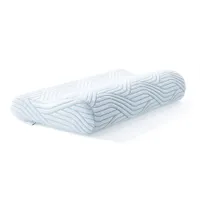The 9 best pillows for all sleep styles – I've tested over 50 options to shortlist my top recommendations
As Ideal Home's Sleep Editor, I've tried and tested over 50 pillows during the past four years. These are my nine top recommendations for side, back, and front sleepers


This guide was updated on 30/12/2025 to include the latest deals on the best pillows we've tested.
Why you can trust Ideal Home
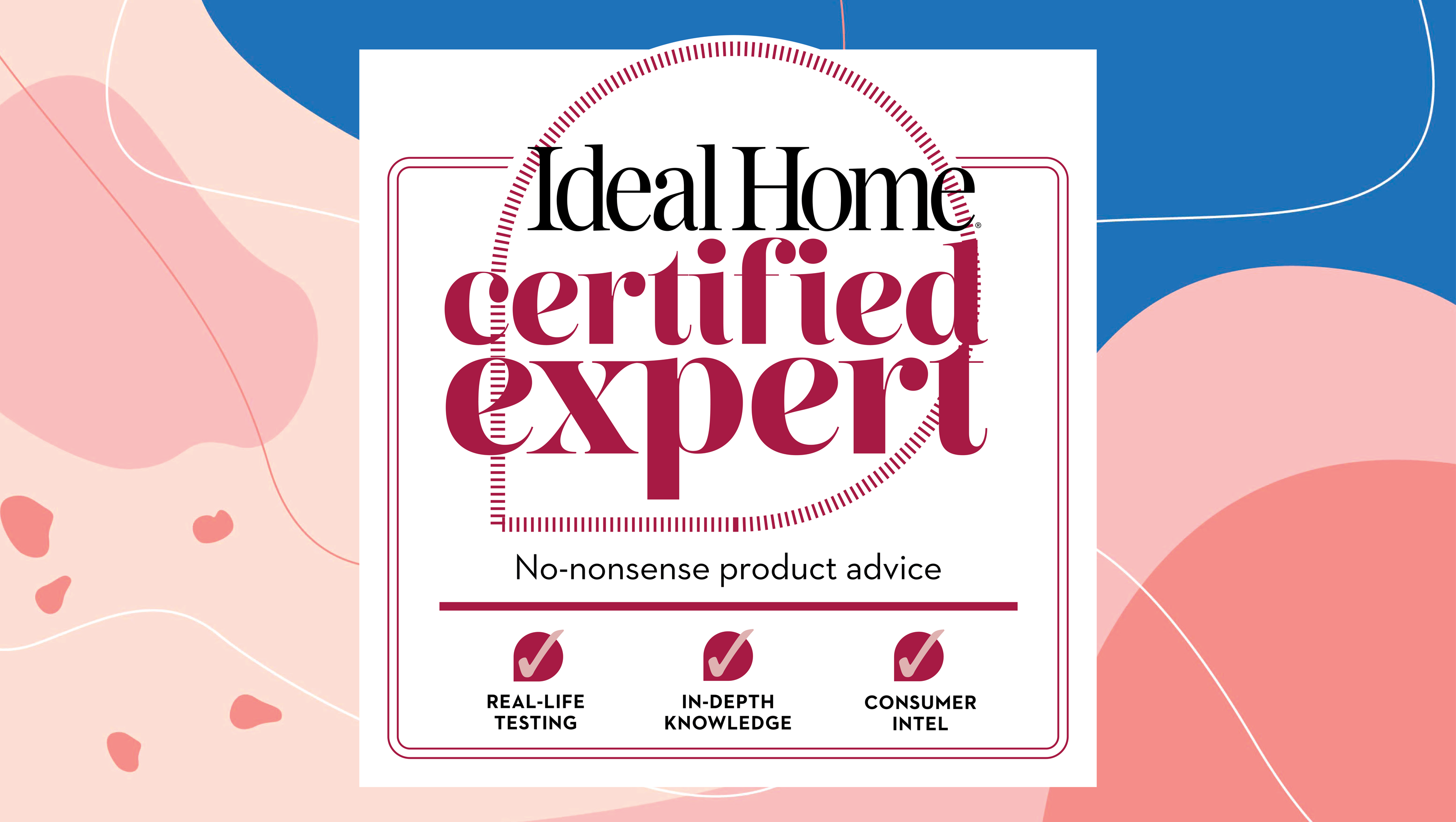
✔ 100 years of industry expertise
✔ 10,000 hours of sleep product testing
✔ Over 50 pillows tried and tested at home
Finding the best pillow for your sleep style is key to a good night's sleep. That's because – as you may already have realised if you’re tossing and turning at night squishing your current pillow into all kinds of shapes to try and get comfy – when it comes to pillows, one size doesn't fit all.
Just like shopping for the best mattress, finding the best pillow for your best night’s sleep depends on several factors, including your preferred sleeping position – i.e. whether you’re a back, stomach, or side sleeper – how firm a pillow you like, if you have any neck pain, and your preferred choice of filling.
So with all this to factor in, how do you find the right pillow for you? That's where I come in. I'm Ideal Home's Sleep Editor and alongside our wider review team I've spent the last five years putting well over 50 pillows through their paces.
I've tested pillows from all the leading brand names and every loft, filling, and construction possible to bring you my top recommendations below.
Best Boxing Day pillow deals
If you're a back or a side sleeper, this Panda bamboo pillow would be our top recommendation. Especially now that Panda has 20% off on it.
If you're after the best cooling pillow to prevent your head from feeling too warm at night, this Tempur SmartCool design is our top recommendation. And QVC currently has it on sale with 11% off.
The quick list
Short on time? This quick list is an overview of the very best pillows I've tested. You'll find more information on each pillow and why I recommend it if you keep on scrolling.

Best pillow for side sleepers
For a side sleeper, a pillow just the right height to fit the gap between your ear and your mattress is vital. This firm foam pillow is available in four height options, meaning you can do just that.

Best pillow for back sleepers
A slightly lower loft and a squishier feel – along with a 30-night sleep trial – make this pillow a great choice for a back sleeper.

Best pillow for stomach sleepers
Soft, low, and with plenty of squish-factor, I've found these are the best pillows to buy if you sleep on your front.

Best pillow for neck pain
An ergonomic design and firm support mean I found this pillow eased my neck pain whether I was lying on my side or my back.

Best memory foam pillow
Firm yet cushioned support, a high loft, an affordable price tag, and a 30-night sleep trial make this one of the best memory foam pillows I've tested.

Best feather and down pillow
Plump and squishy, the scooms Hungarian Goose Down Pillow is everything you'd hope for from a luxury feather and down pillow,
Best pillows – tried and tested
Best pillow for side sleepers




Specifications
Reasons to buy
Reasons to avoid
If you prefer to sleep on your side, I believe the Levitex Sleep Posture Pillow is one of the best pillows for side sleepers available.
That's because it's one of the few pillows on the market that's available in four height options. Why is that important? Because, when lying down, a side sleeper needs a pillow that keeps the head and neck in the same alignment with the spine as it would be if they were standing up straight.
However, the width of our shoulders and the softness of our mattress will affect the height of the pillow we need to keep our head, neck, and spine aligned. That's why the fact that the Levitex pillow comes in 8, 10, 12, and 14cm depths is such a game-changer.
I simply input my height and mattress tension into the Levitex website, and it advised a pillow height that fit the gap between my ear and the mattress perfectly.
It took me a while to get used to the pillow's firm feel, but I soon discovered that firmness is another plus point. This pillow is very stable, so it kept my head, neck, and spine aligned all night long, rather than the filling gradually shifting and my head dropping.
This pillow isn't cheap, but having tested a *lot* of other options aimed specifically at side sleepers, I do think it's worth it. Plus, a 44 night sleep trial means there's plenty of opportunity to test out if it's for you before you commit.
My Levitex Sleep Posture Pillow review has the full lowdown.
Best pillow for back sleepers





Specifications
Reasons to buy
Reasons to avoid
I really love the Panda Hybrid Bamboo Pillow. I found it really comfortable for back sleeping, but it's also a decent pillow for a side sleeper (especially one who has narrowish shoulders) which makes it a good choice if you're an active sleeper who tends to change your sleeping position in the night.
It has a medium loft that isn't too high or too low and a squishy memory foam core that offers a great mix of support and cushioning. Unlike most memory foam pillows, it also feels really luxurious. It can almost give a top-end feather and down pillow a run for its money.
Its silky smooth bamboo rayon cover, a layer of quilted microfibre, and a squishy memory foam core create a premium feeling pillow, and I loved the feeling of sinking my head into it at night.
Its synthetic core does sleep a little warmer than a pillow filled with natural materials, but it sleeps cooler than most synthetic options. Plus, a 30-night sleep trial makes this pillow's high price tag a little more palatable. That return period allows you to sleep on it – literally – to test out whether you think it's worth the money before you commit.
My Panda Hybrid Bamboo Pillow has the full detail.
Best pillow for stomach sleepers

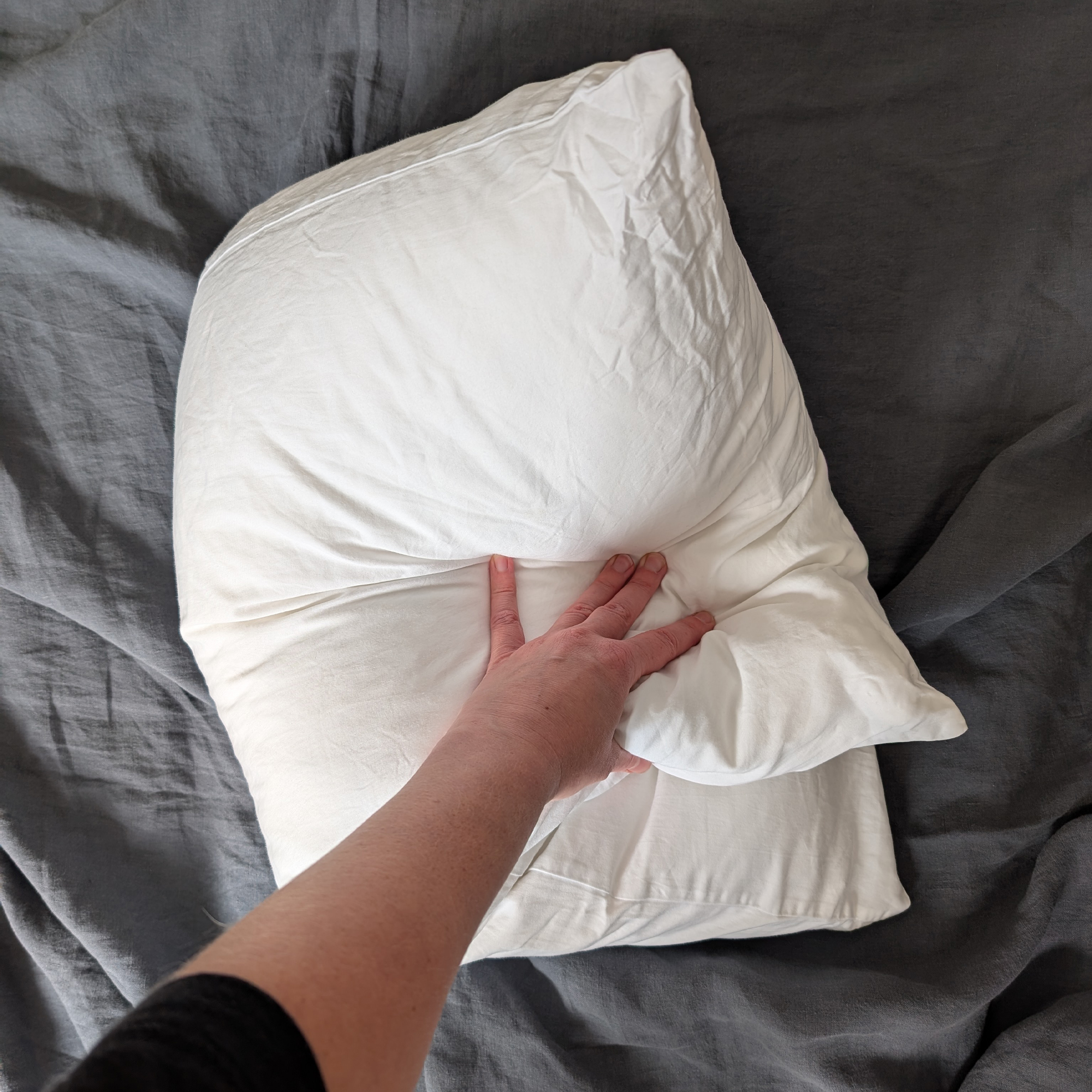


3. M&S 2pk Duck Feather & Down Medium Pillows
Our expert review:
Specifications
Reasons to buy
Reasons to avoid
It's perhaps worth mentioning that every sleep expert I've ever spoken to has told me that stomach sleeping is bad for your neck. So, probably don't do it if you can help it.
However, I often sleep on my stomach, and this is the most comfortable pillow I've found to do so. The experts are no doubt right, and sleeping on your front can strain your neck, so I've found I need a very low and soft pillow for stomach sleeping. This two-pack of M&S duck feather and down pillows in the medium loft delivers.
I only use one, but each pillow feels super soft and squishy, and doesn't have too much filling. That means I can sleep without the pillow lifting my head too far from the bed. And, because I'm an active sleeper who often starts sleeping on my back and then switches onto my side and then front, I love the fact that I can squish the pillow filling into the right height whichever sleeping position I'm in.
The other *big* bonus is that, unlike so many (often far more expensive) feather and down pillows I've tested, I've owned this pillow for nearly four years, and there are still barely any feathers escaping.
Plus, as a hot sleeper, I *love* the fact that, unlike pillows with synthetic fillings, a feather and down never makes me overheat. There's never any pillow flipping in search of the cool side with these pillows.
Best pillow for neck pain


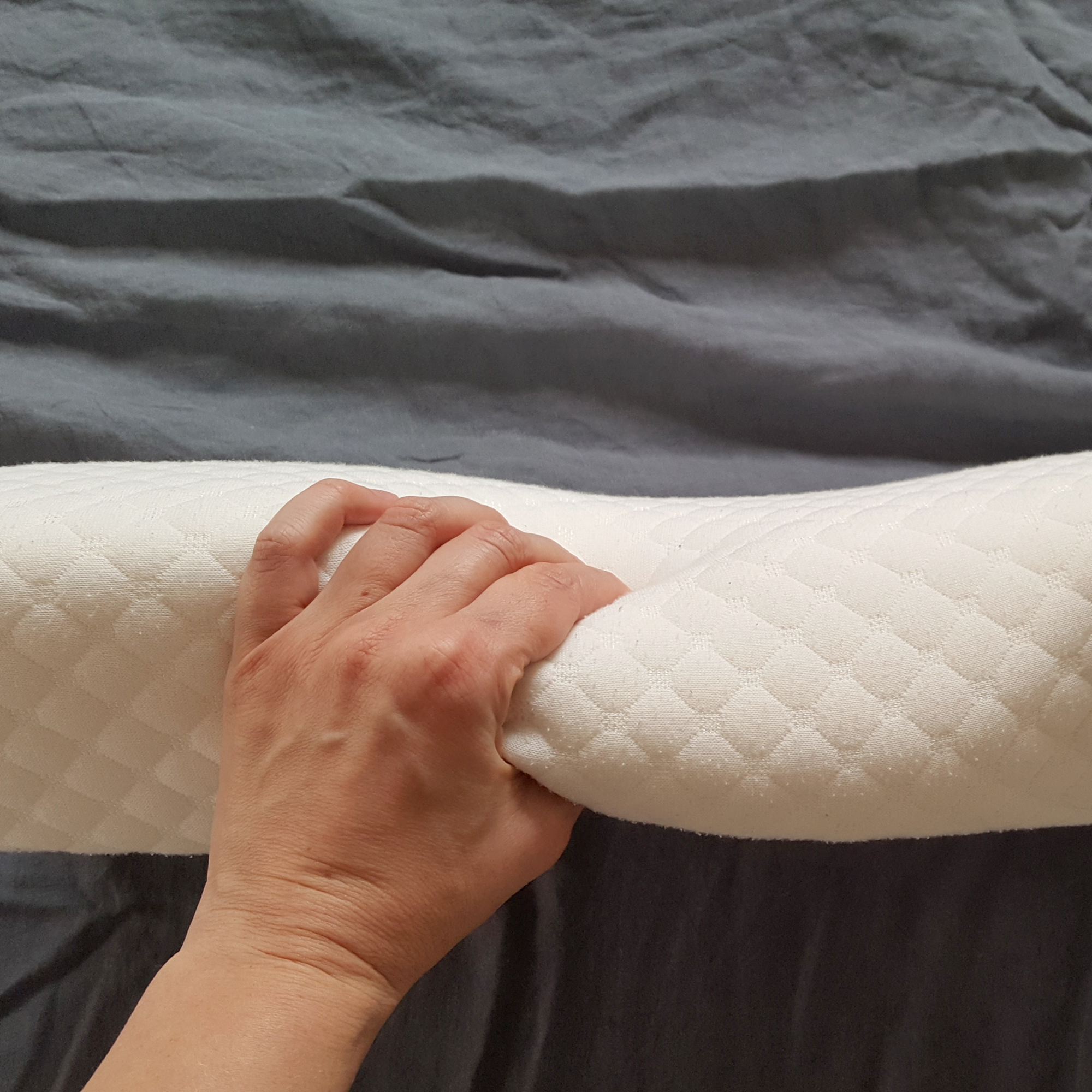

Specifications
Reasons to buy
Reasons to avoid
Although the Kally Sleep Neck Pain Pillow is a much firmer pillow than I would normally opt for, when I recently pulled a muscle in my neck, this is the only pillow that could make me comfortable at night.
I found softer pillow fillings that shifted or moved under the weight of my head triggered a spasm of pain, whereas this solid foam sleep surface kept my head steady and in alignment with my spine, which made for a much more comfortable sleep.
Its ergonomic butterfly shape cradles my head and neck when back sleeping, and supports the natural curve of my neck and head whilst side sleeping. As an active sleeper who changes my sleeping position a lot in the night, this made a huge difference to my comfort.
The downside is that being an unusual shape – and smaller than a standard pillow – this pillow did look a bit lost in my normal pillowcase. (Although the outer quilted pillow cover is comfortable and does zip off for a wash, so you could use it without).
Side sleepers with wider shoulders may also find it too low; sadly, it's only available in one height as yet. I'd love to see the brand introduce a higher version. However, with a 14-night sleep trial available, if you're suffering from neck pain, this pillow is well worth a try to see if it eases your discomfort like it has mine.
My Kally Sleep Neck Pain Pillow review explains more.
Best memory foam pillow





Specifications
Reasons to buy
Reasons to avoid
All things considered, the Panda Memory Foam Pillow is one of the best memory foam pillows I've tested.
Many memory foam pillows can feel a lot like sleeping with a solid block under your head, but the Panda Memory Foam Pillow has just a little more give for a slightly more cushioned feel without losing any of its height.
Although it sleeps warmer than a natural-fill pillow, its synthetic memory foam core is still one of the most breathable memory foams I've slept on. Plus, its removable and machine washable cover is a nice touch, although I did find that cute embroidered Panda logo showed through white pillowcases a little.
However, best of all, is its price. Considering how well-designed and premium it feels, it has a very reasonable price point. Even better, Panda offers it with a 30 night sleep trial, which is a great length of time to test it out and see if it's the right pillow choice for you.
My Panda Memory Foam Pillow review has more details.
6. Best feather and down pillow




6. scooms Hungarian Goose Down PIllow
Our expert review:
Specifications
Reasons to buy
Reasons to avoid
I've tested a lot of feather and down pillows, and overall, I think the scooms Hungarian Goose Down Pillow is one of the best you can buy.
I tested the soft-medium support pillow (there's also a medium-firm option) and I found its super plump filling a good height for back sleeping and a great height for side sleeping. It delivers that 'just right' mix of comfort and support thanks to the combination of a Hungarian goose feather inner core surrounded by a softer, squashier layer of goose down.
Plus, the joy of a feather and down pillow – especially one with a high ratio of down to feathers, such as this – is that it's super malleable, so I found I could squish it to be higher or lower to get it to fit into the gap between my shoulder and neck perfectly.
As a hot sleeper, I also found I slept much cooler on this feather and down pillow than any synthetic-filled pillow I've tried. That's because the natural filling offers great breathability. Unlike many feather and down pillows I've tested, its Nomite-certified dustmite-proof cover also prevents any filling from escaping – I'm yet to discover any stray feathers when I change the bed.
Although it is an investment, it delivers a real sense of hotel-style luxury at home.
Best adjustable height pillow


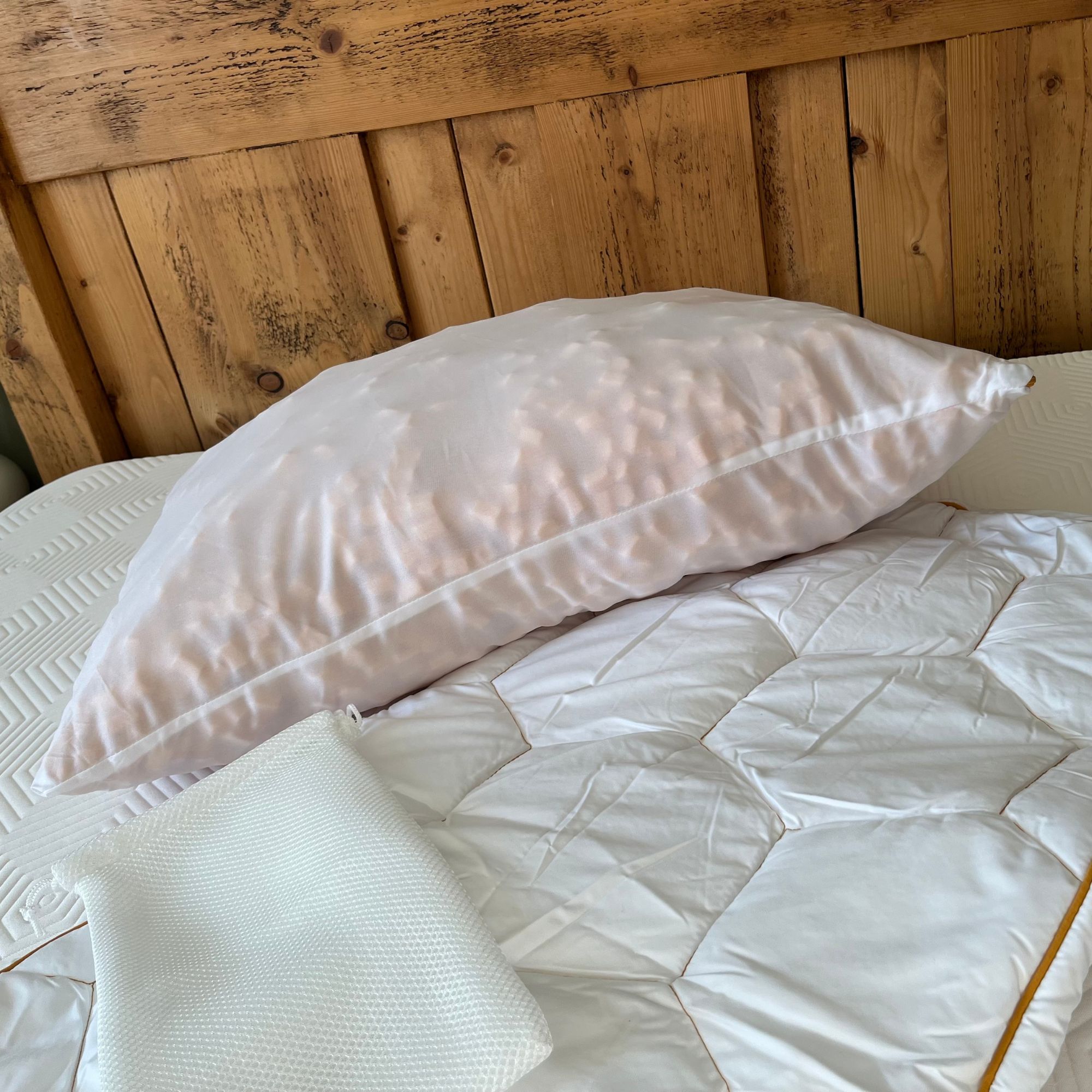
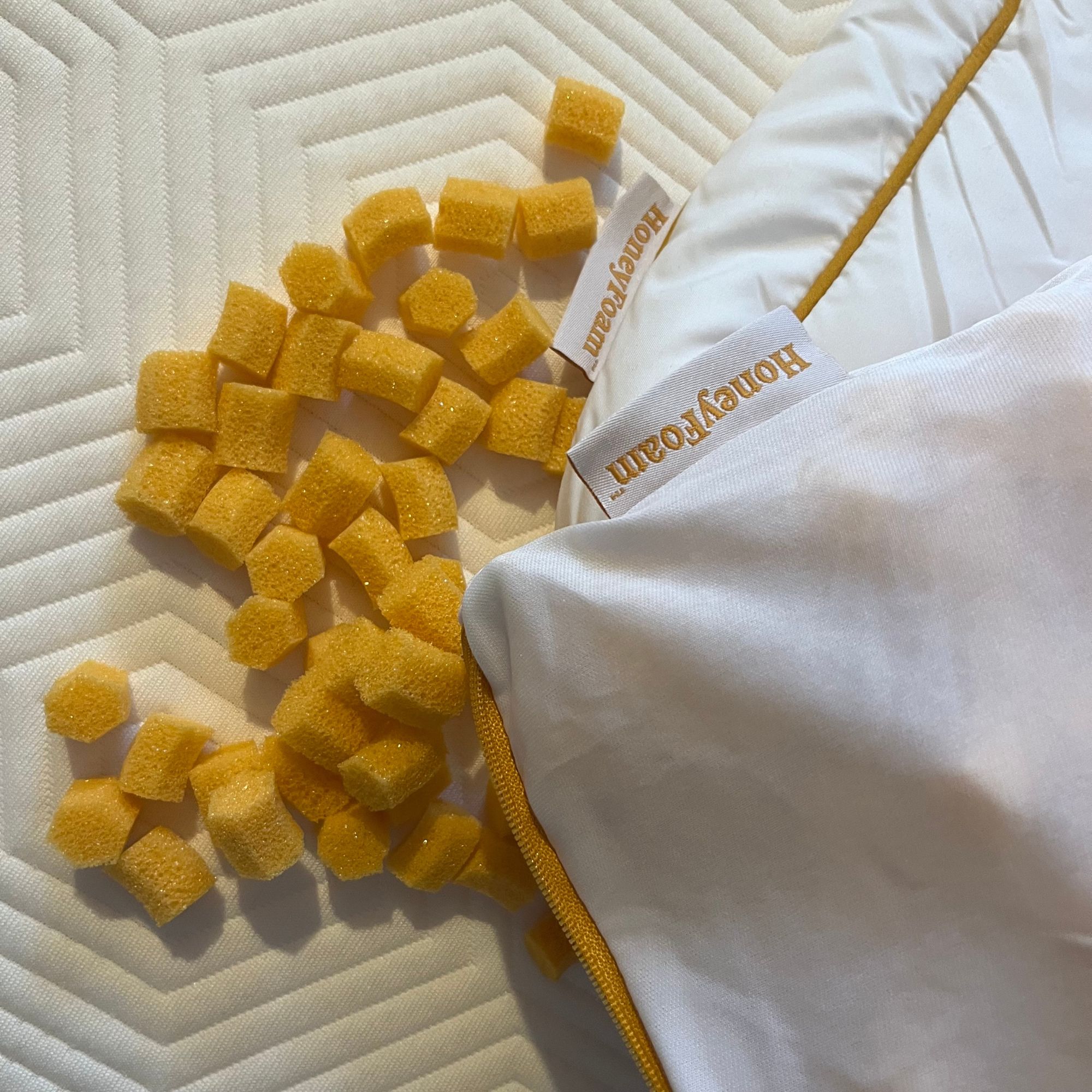

Specifications
Reasons to buy
Reasons to avoid
As I've mentioned, finding the best pillow for your body is all about finding the right pillow height to fit both your sleeping position and your individual body frame.
This can be challenging, as we are all built differently, which is why an adjustable-height pillow is such an ingenious concept. I've tested a few different options over the past five years, from the Simba Hybrid Pillow to the Emma Premium Cloud Pillow, and all in all, I think the Fine Bedding Adjustable HoneyFoam Pillow is one of the best customisable pillows we've tested.
That's because it contains individual memory foam 'HoneyFoam clusters' that can be added or removed to make the pillow into the exact right height you need for side, back, or front sleeping.
That memory foam is also more sustainable than most, and our reviewer Jennifer found it slept cooler than similar options. She also enjoyed its soft, plump feel, saying, 'I found my head stayed nicely cradled in one place throughout the night. That meant that during my four-week testing period, I've been waking with a less stiff neck and shoulder.'
The only downside is that, unlike Simba and Emma's adjustable options, the Fine Bedding Adjustable HoneyFoam Pillow doesn't come with a sleep trial. If that's a dealbreaker for you, you'll find Simba and Emma's adjustable pillows in our also tested section below.
Our Fine Bedding Adjustable HoneyFoam Pillow tells more.
Best cooling pillow




8. Tempur Original SmartCool Pillow
Our expert review:
Specifications
Reasons to buy
Reasons to avoid
If you're looking for the best cooling pillow, it's likely you're currently sleeping on a synthetic hollowfibre or microfibre pillow, or a memory foam pillow, that is making your head too hot at night.
The simplest solution is to opt for a feather and down pillow instead. This natural pillow filling has much better breathability, and in my experience, a feather and down pillow always offers the coolest sleep.
However, if you're vegan or prefer a firm pillow, feather and down won't be for you. So instead, I'll also suggest the best cooling pillow made from man-made fibres, which in my opinion is any of Tempur's SmartCool pillow collection.
These pillows are made from memory foam, so they feel firmer than any feather and down pillow, but as someone who usually overheats on memory foam, I can confirm the SmartCool covers are exactly that: smart enough to feel cool to the touch, whatever the weather, which is bliss to this hotheaded sleeper.
As a side sleeper, I prefer the firm ergonomic Tempur Original SmartCool Pillow that comes in three height options, but if you're a back sleeper, the lower and squishier TEMPUR Cloud SmartCool Pillow is also great. A 30-night sleep trial also makes their hefty price tag a little easier to swallow; at least you know you can return it if it isn't right for you.
Best firm pillow
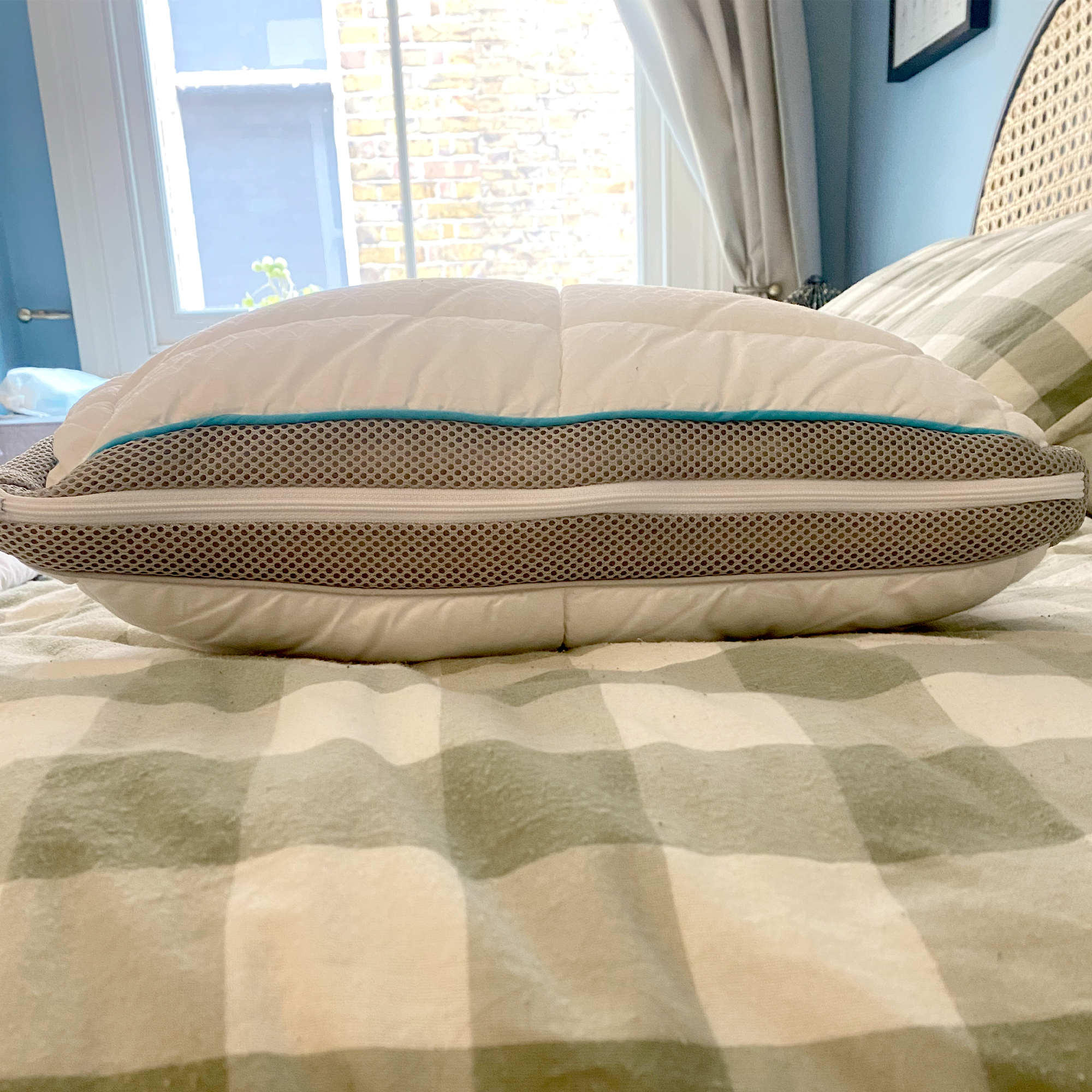



Specifications
Reasons to buy
Reasons to avoid
If you're looking for a firm pillow, it doesn't get much firmer than the Simba's CustomFlex Pillow (previously known as the Simba Hybrid Firm Pillow). In fact, I have to admit this pillow is far *too* firm for my liking. I actually found it gave me an earache! But multiple of my firm-loving pillow testers say this is their very favourite pillow and sleep on it every night, so I'm going to bow to their opinions on this.
The reason this pillow is so much firmer than most is that it contains springs. Yep, it's the only pillow I know of that contains an actual spring layer, and that makes it almost like a mini mattress for your head.
The other plus point of this pillow is that its height is customisable. All in all, there are three layers stuffed into its outer case: the titanium alloy micro springs layer, and then two layers filled with recycled polyester to soften those springs a little.
That means you can play around adjusting the comfort and support layers, and alter the height of the pillow, which is particularly useful for side sleepers.
The downsides are that despite the cooling tech in its outer cover, I found it still slept a little warmer than I would have liked. And – the big one – its £159 price point is eyewatering. Plus, Simba no longer seems to offer a sleep trial on its pillows, which makes it a risky investment.
However, both our reviewer Richard and experienced bedding expert Zoe wouldn't be without it, so if nothing else is proving as firm as you like, this pillow may well be worth the investment for you.
See what my fellow pillow tester Richard thought in his Simba CustomFlex Pillow review.
Quick comparisons
Pillow | RRP | Best for | Loft/height | Support | Filling | Sleep trial |
|---|---|---|---|---|---|---|
£80 | side sleeping | 4 height options | firm | foam | 44 nights | |
£89.95 | back sleeping | medium | medium-firm | memory foam | 30 nights | |
£39.50 | stomach sleeping | low | soft | feather & down | none | |
£49.99 | neck pain | medium | firm | memory foam | 14 nights | |
£44.95 | side sleepers / memory foam lovers | high | medium-firm | memory foam | 30 nights | |
£95 | feather & down lovers / hot sleepers | medium | medium | feather & down | none | |
£99 | adjustability | adjustable | medium-soft | memory foam | none | |
£149 | hot sleepers | 3 height options | medium-firm | memory foam | 30 nights | |
£159 | firm pillow lovers | adjustable | firm | memory foam & springs | none |
Also tested
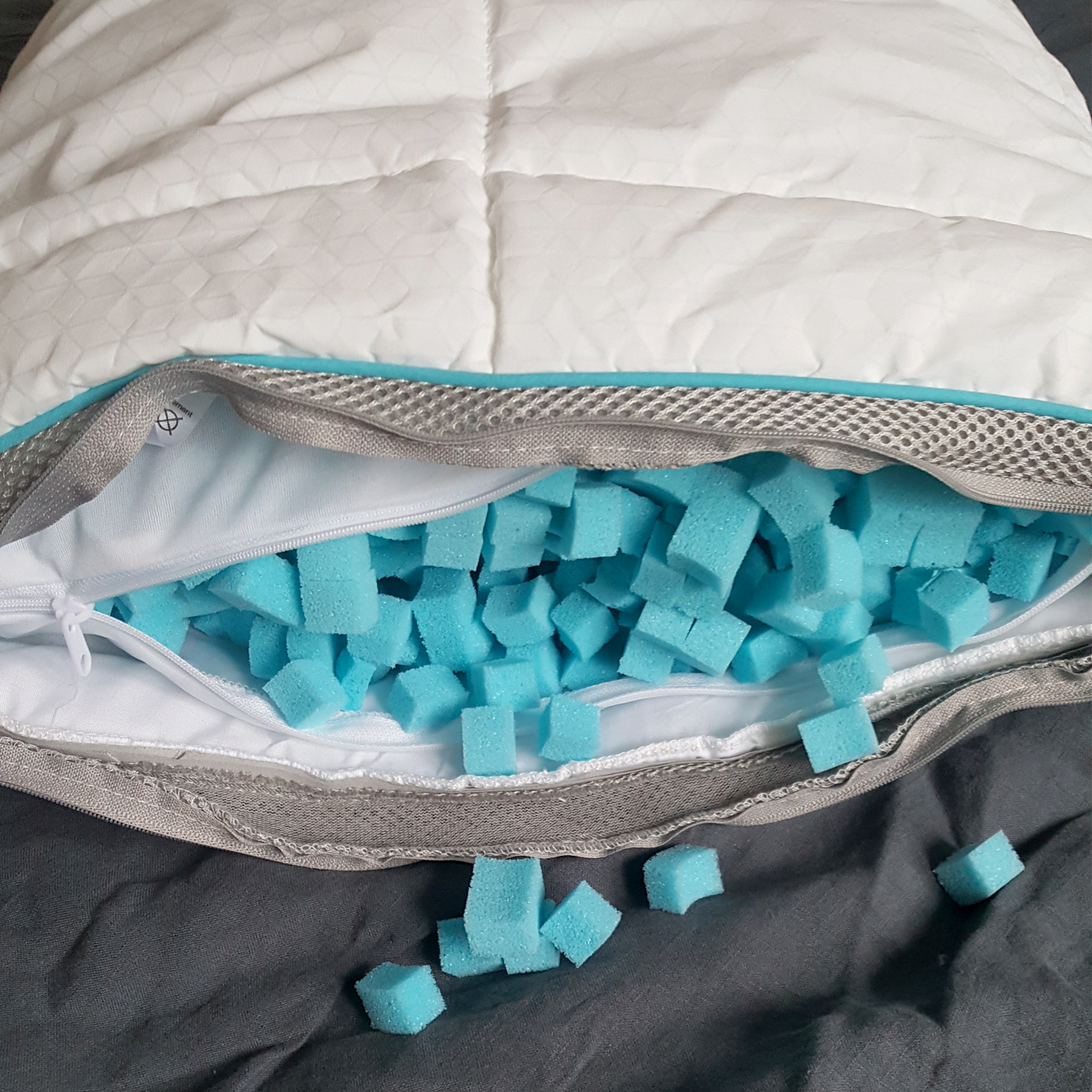
RRP: £109
Simba's Hybrid Pillow was one of the first adjustable pillows on the market, and it's still a bestseller for good reason. Its memory foam 'nanocubes' are easy to add or remove, and it features cooling technology in its cover, plus it comes with a sleep trial. However, in our tests, we found the Fine Bedding Adjustable HoneyFoam Pillow still slept a tad cooler, and our tester, Jenny, found the HoneyFoam softer, plumper, and cheaper.
Our Simba Hybrid Pillow review has more info.
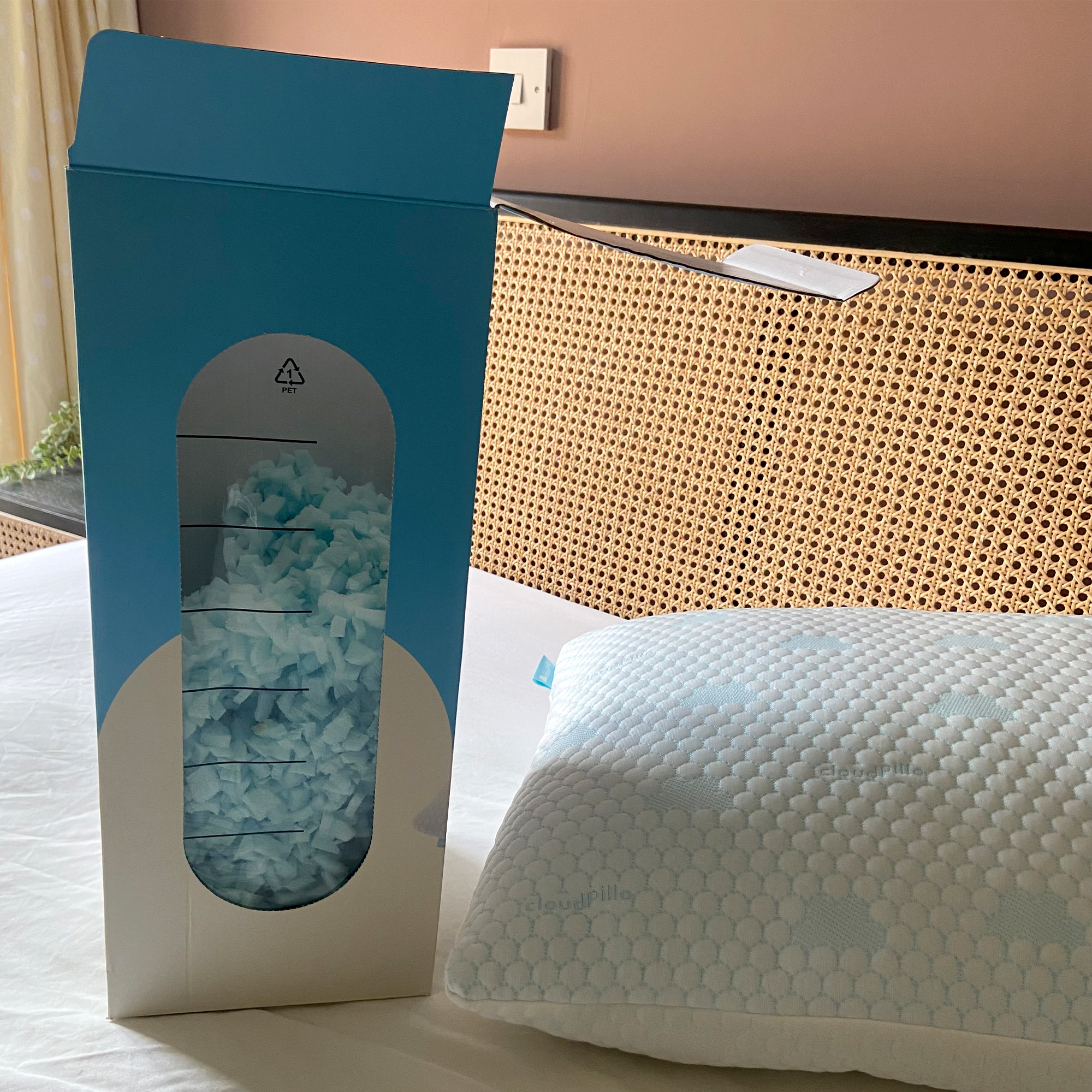
RRP: £69.95
Another adjustable pillow, the Cloudpillo Original impressed our reviewer, Rachel. She just found its adjustable shredded memory foam inner messier than the Simba Hybrid's 'nanocubes' or the Fine Bedding Adjustable HoneyFoam Pillow's 'honeyfoam clusters'. But, at £69.95, it is quite a bit cheaper, and it comes with a lengthy 100-night sleep trial.
Our Cloudpillo Original Pillow review has more detail.

RRP: £80
Emma's adjustable pillows take a slightly different approach. The Premium Cloud Pillow has two polyester-filled inserts, which you can add or remove to tweak the pillow height. That means that this is a slightly less adjustable pillow than the Simba Hybrid or Fine Bedding Adjustable HoneyFoam Pillow, but I still found it a nice, soft option for a side sleeper. It also comes with a sleep trial and is fully machine washable.
Our Emma Premium Cloud Pillow review has more info.
How we test pillows

I'm Amy, Ideal Home's Sleep Editor and Certified Expert in all things sleep-related. I've spent the last five years testing sleep products by night and sharing my findings with our readers by day. That includes sleeping on more than 50 different pillows (and counting) to find the best in class. All in all, that's over 10,000 hours of at-home pillow testing under my belt!
Before creating this shortlist, I slept on each pillow for at least three nights (in most cases far longer) on my own bed to assess its comfort when side, back, and stomach sleeping.
I also noted how warm each pillow slept – i.e., if it caused my head to get hot during the night or if I stayed cool and fresh – after all, no one wants to wake up with a sweaty head! Plus, I considered how easy each pillow is to care for, whether it comes with a sleep trial, and its value for money.
This guide includes only those pillows that performed the very best during my tests. I regularly update this guide and remove any pillows that don't make the grade long-term, whether that's due to escaping feathers, not washing well, or flattening over time.

Where to buy the best pillows
Wondering where to shop? I've rounded up a quick list of the best places to buy a new pillow.
- Amazon: affordable synthetic pillows
- Argos: affordable pillows of all types
- Dunelm: affordable pillows of all types
- John Lewis: high-quality pillows of all types
- Kally Sleep: pillows for neck pain
- M&S: high-quality pillows of all types
- Panda: high-quality memory foam pillows
- scooms: high-quality feather and down pillows
- Simba: height-adjustable synthetic pillows
- Soak & Sleep: high-quality pillows of all types
- The White Company: high-quality feather and down pillows
- Woolroom: high-quality wool pillows
How to choose a pillow
As I've mentioned, finding the best pillow for your best night’s sleep isn't a one-size-fits-all affair, and it's important to get it right.
As Kora Habinakova, sleep and bedding expert from bedding specialist Sleepseeker, explains, ‘the purpose of a pillow is to support your head and align your neck and spine while you lie down’. But get it wrong, and misalignment between the neck and spine can create ‘discomfort, stiffness, and even pain in the neck, shoulders, and back,' says Kora. 'It can also exacerbate existing spinal conditions or lead to new ones over time.'
So, finding the right pillow for you will depend on a few key considerations. These include your regular sleep position – i.e. whether you’re a front, back, or side sleeper – whether you prefer a firm or a soft pillow, if you have any preferences about the materials your pillow contains, and whether you have any health issues to consider, such as allergies, snoring, or pre-existing neck pain.
You can find more detailed buying advice in our guide to how to choose a pillow, but here's a quick checklist of the four main considerations.

1. Sleeping position
Your usual sleeping position is key to your pillow choice, because this affects the pillow height (also known as loft) that you need.
As Dave Gibson registered osteopath, sleep expert, and founder of The Sleep Site explains, 'your pillow should hold your head in the same position as it would be if you were standing upright with good posture. Too low and your head falls back creating pressure in the neck. Too high and it tends to leave the neck muscles stiff'.
This means a side sleeper generally needs a high pillow, a back sleeper a low to medium-height pillow, and a stomach sleeper a very thin pillow.
2. Firm or soft?
Your sleeping position can also affect which pillow firmness is best for you.
A side sleeper needs a firm pillow that keeps the head lifted during the night. Whereas a back sleeper might prefer a medium-firm or soft pillow that cushions and cradles the back of the head. A front sleeper needs a far softer pillow that won't lift the neck too far from the mattress.
3. Filling type
Your choice of pillow filling may also be dictated by the type of support you need; for instance, memory foam is best for firm support, and feather and down, microfibre or hollowfibre can offer medium or soft support.
However, each filling also has its own pros and cons. For example, natural fillings such as wool or feather and down tend to sleep a lot cooler than synthetic fillings. Our guide to the best filling for a pillow has more information.
4. Sleep trial
My last tip is to try and make the most of a sleep trial when it comes to choosing a pillow.
A sleep trial generally means that you buy the pillow and then have a set number of nights to trial sleeping on the pillow on your own bed. Terms and conditions may apply, but if you don't like the pillow, you can usually then return it for a refund within the trial period, or swap it for an alternative pillow.
Not all pillow manufacturers offer this feature, but many – such as scooms, Panda, Tempur, and more – now do. Because choosing a pillow isn't one-size-fits-all, a sleep trial is a great way to avoid wasting money on a pillow that ends up not being the right fit for you.

FAQs
How do I know if a pillow is right for me?
Wondering if you've found the best pillow for you? As Hannah Shore, head of sleep science at Mattress Online, explains, 'Simply put, you should find your pillow comfy. A pillow should allow you to sleep throughout the night without you waking up due to being uncomfortable, if you find yourself rearranging your pillows a lot throughout the night, chances are that pillow isn’t for you'. This is where a sleep trial can help, as it allows you to test out the pillow at home to make sure it's the one for you before you commit.
How many pillows should you sleep with?
If you're wondering how many pillows you should sleep with, it might surprise you to know that experts advise only sleeping with one pillow, not two, as many of us might be used to. Therefore your choice of pillow is all the more important.
Is an expensive pillow worth it?
Is an expensive pillow worth it? Yes, if it provides you with a good night's sleep an expensive pillow can be worth every penny, and more expensive pillows do tend to be better quality. Plus, when we consider that we use our pillow every single night, working out its cost per use suddenly becomes a lot less. That said, you don't need to spend a fortune. Finding a pillow that's the right height and firmness for your sleep style is much more important than how much it costs.
How often should you replace a pillow?
When it comes to how often you should replace a pillow, the expert advice is every two years. However, there are things you can do to prolong your pillow's lifespan, such as using a pillow protector, learning how to wash a pillow, and how often you should wash a pillow.
Finding the best pillow for your needs is a key component of how to sleep better. However, it isn't the only important piece of bedding you need to know about.
As well as a comfortable mattress, you'll also want to source the best mattress protector, best duvet, and potentially the best mattress topper for your bed. Luckily we've tested numerous options to help you find the best products for your sleep set-up.
Sign up to our newsletter for style inspiration, real homes, project and garden advice and shopping know-how
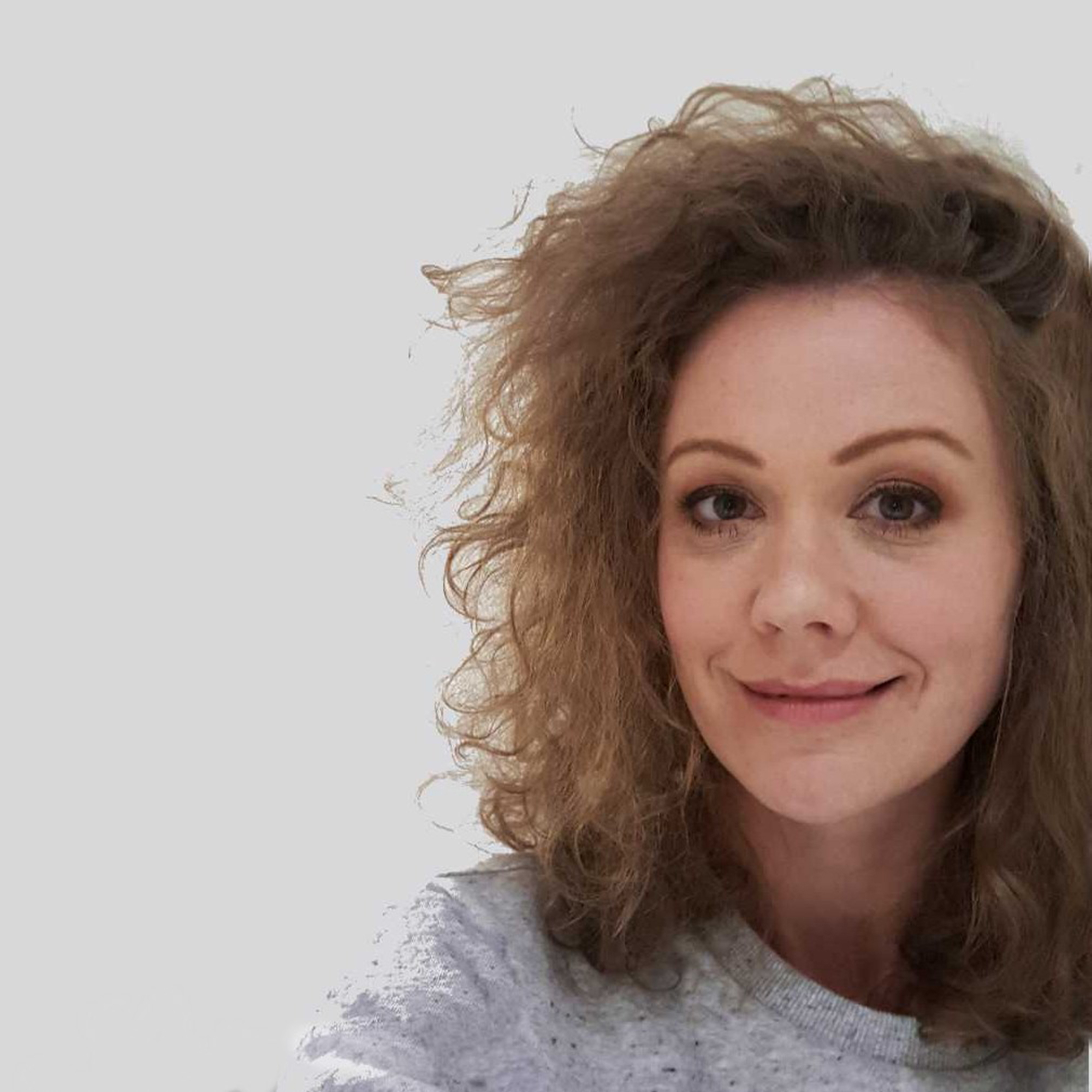
Amy is Ideal Home’s Sleep Editor and the Ideal Home Certified Expert on Sleep. She's spent the last four years researching and writing about what makes for the best night’s sleep during the day and testing out sleep products to find the best-in-class by night. So far she’s clocked up over 10,000 hours of pillow, duvet, and mattress testing experience.
Our go-to for all things sleep-related, she’s slept on and under bestselling products from Simba, Emma, Hypnos, Tempur, Silentnight, Panda, and many many more.
As a hot sleeper, Amy is always on the lookout for the most breathable bedding, but she also leads a wider team of testers to ensure our product testing encompasses both hot sleepers, cold sleepers, front sleepers, back sleepers, side sleepers, and everything in-between.

